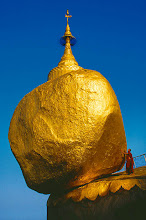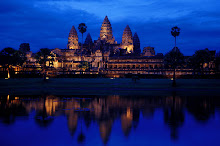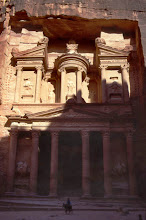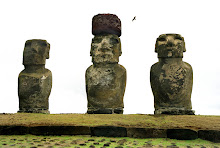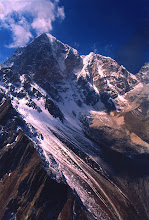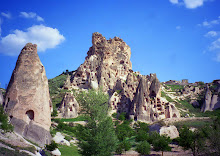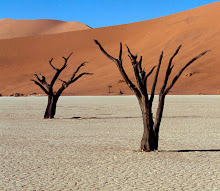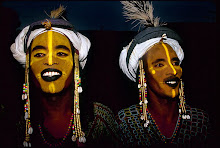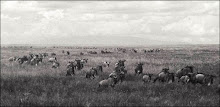
Some of the best Roman ruins are far from Rome, like the twenty-story high columns of the Temple of Jupiter. They are absolutely huge and were built from the 1st to 3rd centuries with some of the blocks used, weighing over 80 tons. Imagine a twenty story building in major city, with single columns that went from the first floor to the roof. There are also some great Roman ruins in Libya, called
Leptis Magna near Al
Khums, but Libya's on again - off again visa policy has made them difficult to see.

We arranged with a Lebanese friend to have someone pick us up in Damascus and drive us to Beirut. We were told he was a businessman and when he picked us up at the
Omayaad Hotel and loaded our luggage into his Mercedes, we saw two AK-47's in the wheel wells. We asked him what he did and he said he was state security for the President
Hirari of Lebanon - that is why we can not show his face (above). He was taking a few days off to help us out in our tour of Lebanon -
unfortunately his boss was later assassinated in a huge car bomb tracked to Syrian intelligence.
When we travel, we are always looking for unique and interesting situations so we can learn about the people and the culture, regardless of popular opinion. We don't really shy away from much and Lebanon is one unique experience after another. When we travel in any area, we always hire very well connected guides and bodyguards when needed. In the past, we would do a great deal of research and then travel anywhere without fear of anything.
We stopped in the
Bekaa Valley on the way to see the Temple of Jupiter for four hours which was a couple of miles from
Hizbollah headquarters. In Beirut, we purposely stayed in the Mayflower Hotel where many of the western hostages were kidnapped in the previous years. The guys at the front desk looked at our passports for quite a while and laughed that they had not seen American passports for a long time. We knew nothing would happen to us because of our bodyguard's connections, but we don't travel like this as much as we use to.
There was the Green Line, which was the demarcation line between Muslim West Beirut and Christian East Beirut during the
fifteen year long civil war. It's a five mile strip of buildings that were completed shot up and massively scarred by
RPG and tank rounds. Imagine every time you moved in your apartment, your neighbor across the street shot at you... And every time you saw your neighbors across the street, you shot at them.
We went to a
Hizbollah barbeque in South Beirut where they cooked fish over 4 x4 oak building posts. We heard extreme stories from our friends at the US embassy where the previous three ambassadors had been assassinated. Embassy staff only went out with 10 white Chevy Blazers with roof mounted M60s machine guns. They stopped for nothing, not even stop signs or stop lights, they just rammed cars and had the drivers show up with receipts for repairs. They would be reimbursed and this has to be one of the more unique uses of American tax dollars.
Today Beirut is again one of the all time great party and food towns in the world. We went out all night one Saturday, to a famous nightclub called B0-18 which was named after the code for an apartment complex 18 kimoters north of of Beirut. During the long civil war, a DJ named
Gebran lived in the unit and was famous for his "musical therapy" sessions held in his apartment. It eventually became an all night and sometimes all day, nightclub - the Lebanese did not lose their culture during the civil war.
The ruins of Byblos on the sea, should definitely be checked out. There were many civilizations including the Phoenicians, in this northern Lebanese city over thousands of years, and you can just wander among them.
Best Time to Go: Anytime, but you want to make sure it is safe, as there has been a lot of bombing from Israel and others in the last few years.
How Long to Stay: 3-5 days, but maybe combine with
a 10 day trip to Jordan with stops at Petra, Aqaba, Dead Sea, Red Sea, Jerash and Wadi Rum.General Costs: Medium to high
What To Do: Beirut nightlife, Byblos ruins, Temple of Jupiter, make sure you have local guides who are connected
UNESCO World Heritage Site? Yes for Byblos and
Baalbeck's Temple of Jupiter
Weather: Mild to hot
Language: Arabic





